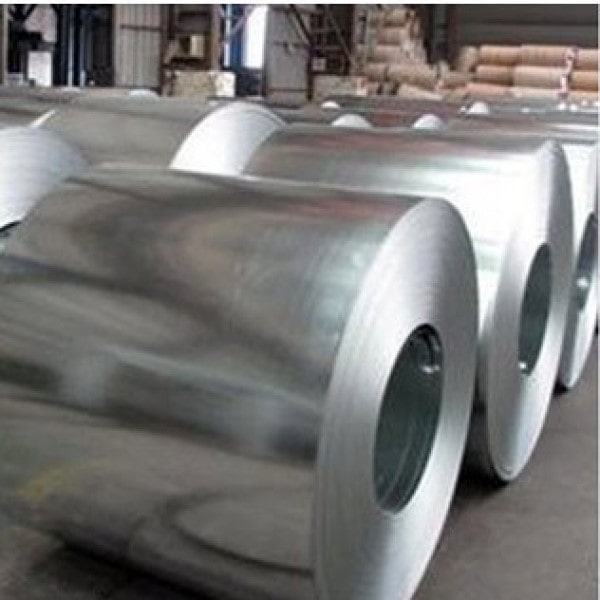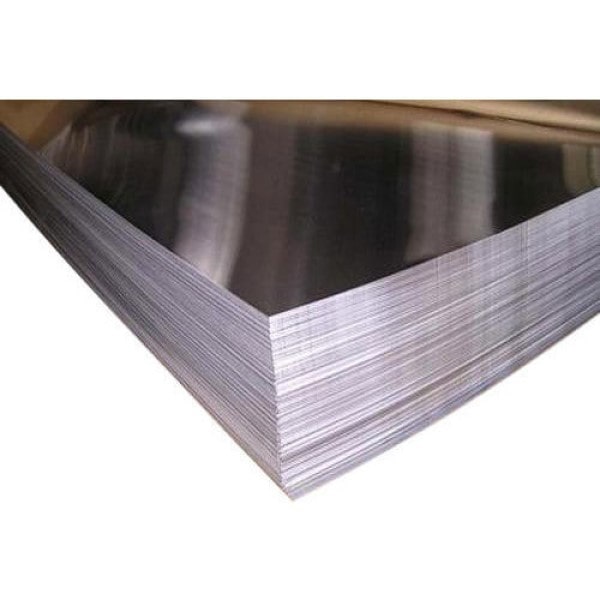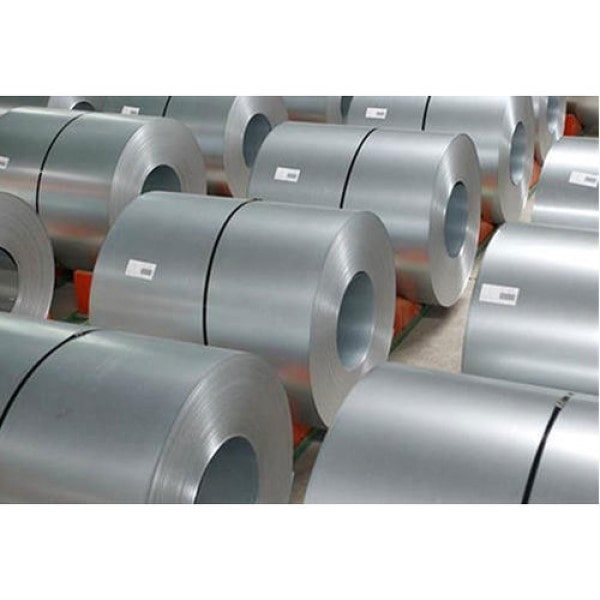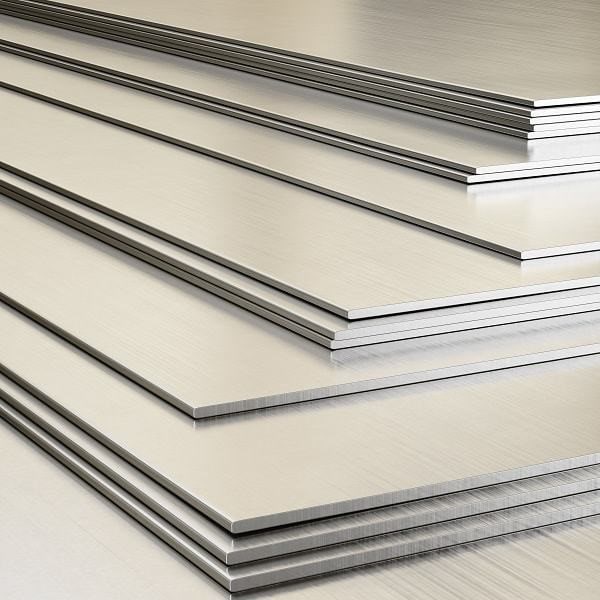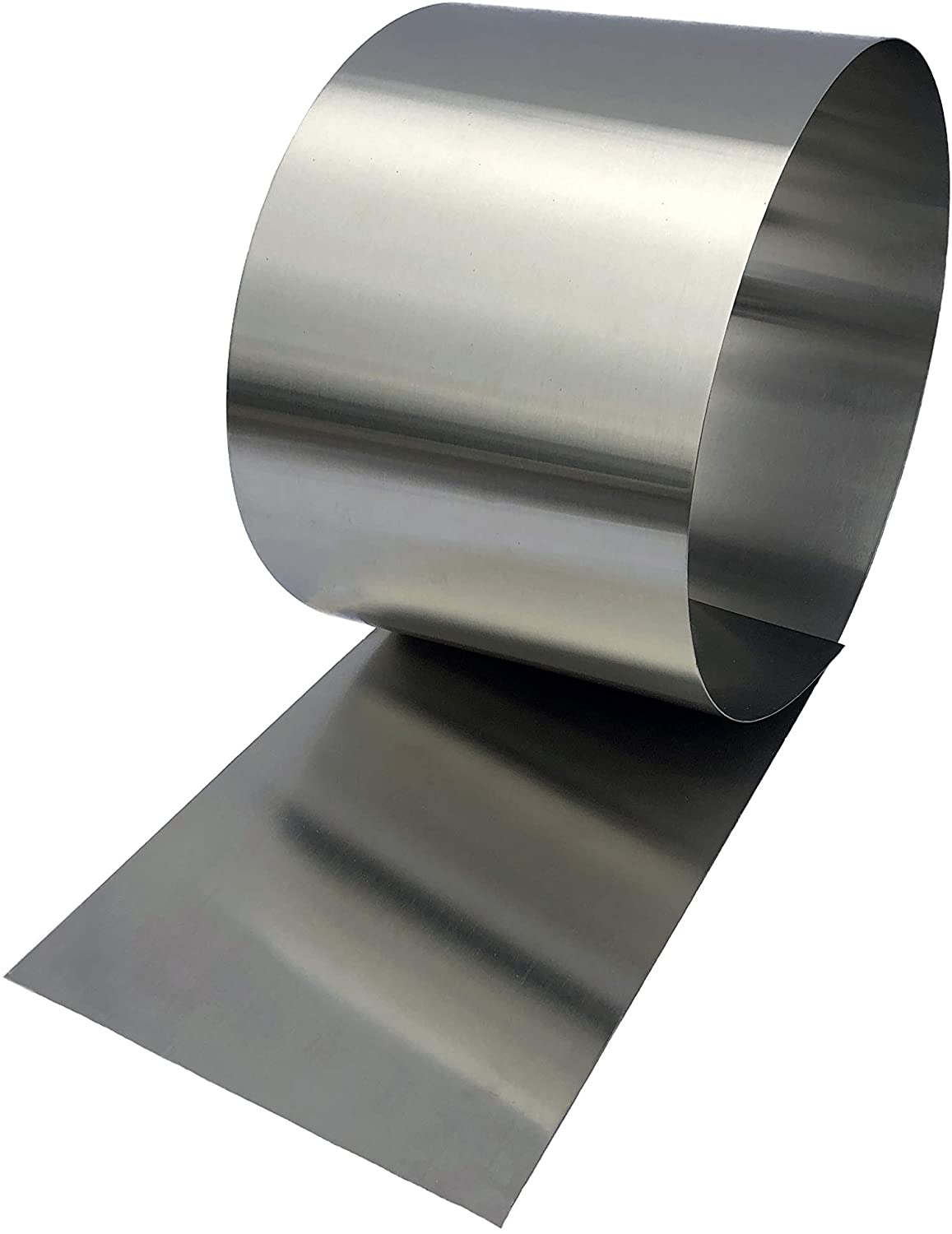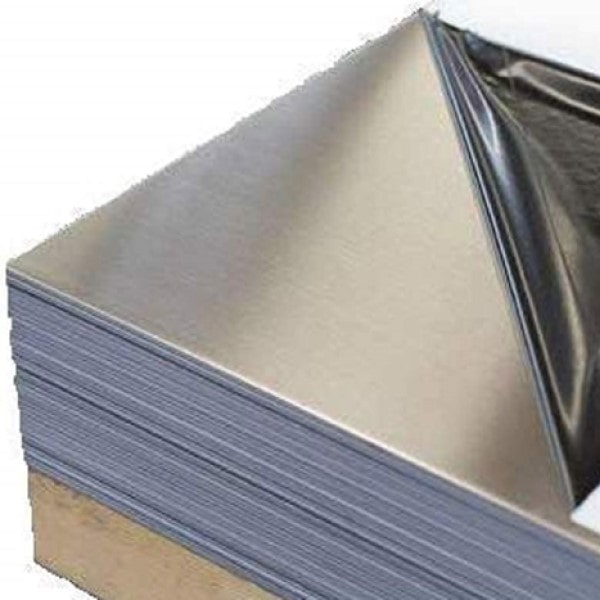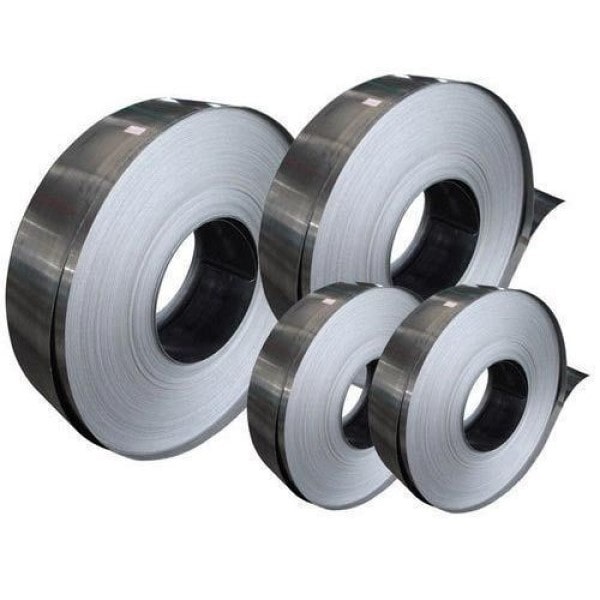 What is a sheet metal? What are the types of sheets metal?
What is a sheet metal? What are the types of sheets metal?
sheet metal is one of the most widely used products that has a very colorful role in our lives. sheet metals are used in various industries, buildings and equipment. Semi-finished sheet metal in the industry covers a wide range of products. Sheet metal can be classified according to its thickness and material. Of course, this category can be changed due to the large number of sheet metal factories in the world and the multiple standards of their manufacture.
sheet metal is basically made by a process called rolling or rolling. There are two types of rolling mills for sheet metal production. A number of sheet metals are produced by hot rolling and the rest by sheet metal by cold rolling.
Basically, the classification of sheet metal is based on the thickness and material used in it. Due to the variety of production and variety of alloys, more categories can be created for sheet metal.
 What is the classification of sheet metal in terms of
thickness?
What is the classification of sheet metal in terms of
thickness?
In these categories, we have indexed one of the most famous German steel brands, the German din.
1- Thin sheet metal
■ Thick sheet metal thickness is from 0.1 to 2.75 mm.
2- Medium sheet metal
■ The average thickness of sheet metal is from 3 to 4.75 mm.
3- Thick sheet metal
■ Thick sheet metal thickness of 5 mm and above.
 What is the classification of sheet metal in terms of the
material used in it?
What is the classification of sheet metal in terms of the
material used in it?
sheet metals are divided into two general categories in terms of the material used.
1- Iron sheet metal
These sheet metals include sheets that are made of simple carbon steels, alloy steels, and stainless steels.
2- Non-ferrous sheet metal
This type of sheet metal includes sheets that are made of aluminum and copper and their alloys (sheets of brass and bronze, zinc, tin and magnesium).
 Metal-steel sheet classification:
Metal-steel sheet classification:
1- Classification of metal-steel sheets based on chemical composition.
2- Metal-steel sheet classification based on appearance specifications.
 What is the classification of metal-steel sheet based on
chemical composition?
What is the classification of metal-steel sheet based on
chemical composition?
Chemically, metal-steel sheet has two general categories.
1- sheet metal - Carbon steel: Due to the fact that in the production of this type of sheet metal, its steel is composed of carbon element, it is called carbon steel. The classification of this group of sheet metals is based on the percentage of carbon in it.
■ Low carbon steels
A sheet of metal with 0.25 percent carbon in its steel is called a sheet.
■ Medium carbon steels
A sheet of metal with a steel content of 0.25 to 0.65 percent carbon is called a sheet metal.
■ Top Carbon steels
A sheet of metal with a carbon content of 0.65% or more is called steel sheet.
2- sheet metal - alloy steels:
■ Low alloy steels
A sheet of metal that contains 0.1% alloy steel elements is called steel sheet.
■ Medium alloy steels
A sheet of metal that contains 0.1 to 2.5 percent alloy steel elements in its steel is called.
■ High alloy steels
A sheet of metal with an alloy steel content of 2.5% or more is called steel sheet.
 Division of sheet metal - steel in terms of appearance:
Division of sheet metal - steel in terms of appearance:
1- Ordinary black sheets
■ In this type of sheet metal, no polishing has been done and a layer of oxide has covered its surface.
2- Glossy sheets
■ This type of sheet metal has a smooth and white surface with no oxidation on its surface.
3- Galvanized sheets
■ The surface of this type of sheet metal is covered with zinc metal.
4- White iron sheets
■ The surface of this type of sheet metal is covered with tin.
5- Colored sheets
■ This type of sheet metal has a surface with different colors.
 How are sheet metals produced?
How are sheet metals produced?
sheet metal is created during a process called steel rolling in the steel industry. There are two types of rolling in the steel industry.
1- Hot rolling
■ The sheet metal formed during this rolling is called hot sheet metal.
2- Cold rolling
■ The sheet metal that forms during this rolling is called cold sheet metal.
In hot state, rolling machines turn metal ingots into thick sheets. Medium-sized papers are also produced from thick sheets in the hot state. Thin sheets are produced in the cold state.
 What is hot rolling or hot sheet ?
What is hot rolling or hot sheet ?
Hot sheet metals are sheets made from hot-rolled ingots. Due to their dark and opaque appearance in the market, these sheets are also known as black sheets and are offered to the consumer market in both coil and sheet thicknesses of 1.8 mm and more. The sheets that are made by the hot rolling method are called black sheets.
 What is cold rolling or cold sheet ?
What is cold rolling or cold sheet ?
Hot sheet metals are sheets that, after hot rolling, undergo a cold rolling process and are also known as oiled sheets in the market due to their shiny appearance (which is the result of applying a layer of oil on their surface). These sheets are available in 0.3 to 3 mm thickness and are available in two modes: sheet and coil. Oil-cold rolled sheets are called oiled sheets.
 Standard sheet sheet metals available in the market:
Standard sheet sheet metals available in the market:
The sheets available in the market are divided into the following seven categories.
■ Oily sheets
■ Galvanized sheet
■ steel sheet
■ Colored sheets
■ Acid washing sheet
■ Black sheet
■ chequer plate
■ aluminium sheet
 Oily sheets:
Oily sheets:
In fact, the naming of cold-rolled oil sheets is related to its popular modification. Oiled sheets are easily recognizable due to their shiny and shiny appearance. Due to having the same appearance in the industry, this type of sheet is used to produce accessories that need a beautiful appearance. For these new products, for example, the production of refrigerators and washing machines can be mentioned. Oiled sheet metals are produced in three main categories.
■ Semi-Stretch sheet ST12
■ Ordinary sheet ST14
■ Stretch sheet above ST13
Note: In fact, oiled sheets are the basis for the production of galvanized non-ferrous and non-ferrous sheet metals. The thickness of this product is from 30% mm to 3 mm and they are produced in two standard widths, which include 100 cm and 125 cm.
 Galvanized sheets:
Galvanized sheets:
There are several ways to galvanize sheet metal. One of the most economical but also the most economical is to immerse the metal in molten pools to cover all surfaces of the sheet. will find. In this method, due to the presence of a small amount of impurities in the zinc, on the sheet metals inside the pond, appendages are created, which are called flowers. With the advent of these flowers, the classification of galvanized sheet metals is practically created.
This type of sheet metal is classified into three models: Zero Spangle, Minimum Spangle and RegularSpangle. The smaller they are, the better the quality. The standard of galvanized sheet is different and is divided according to the thickness, weight of the zinc coating, the cooling rate of the sheet, the adhesion, the appearance of the parts and so on.
■ Standard 1461 ASTM A123 ISO
■ AS / NZS 4680 standard
■ CAN / CSA G164 standard
The thickness of these sheets is from 0.18 to 6 mm. The width of these sheets is produced in two sizes of 100 and 125 cm and with Koting 100, 120, 180, 220, 275.
Coatting The amount of zinc coating on the two surfaces of the sheet and its unit is gr / m2. The higher the amount of zinc metal on the surface of the sheets, the higher the so-called sheet coating. Higher galvanized sheets will have much better quality and will be marketed as better quality. Chinese Koting sheets have between 100 and 120 and Japanese, Indian, Korean, etc. sheets up to 180 Koting.
 steel sheet:
steel sheet:
In fact, steel is an alloy of iron with a carbon content of less than two percent. If the available carbon is less than 0.15%, it chooses the name of plain soft carbon steel. It is used in nails, rivets and seamless hub pipes. When the percentage of carbon is from 0.15 to 0.3, it is called low carbon. It is used in the production of beams, round bars and springs. If the amount of carbon alloy is from 0.3 to 0.6 percent, it is called medium carbon, which is used for shaft, crankshaft, spring, and if the alloy is above 0.6 percent, it is high in carbon and for saws, wrenches, drills and so on. A screwdriver is used.
Steel sheets are available in two simple forms, carbon and alloy, and the difference between the two types is in the elements. Simple carbon steel consists of common elements including silicon, manganese, sulfur and phosphorus. By adding other alloys to this compound, stainless steel is produced that has high properties. At least 10.5 percent of chromium is needed to corrode metals to form chromium oxide after combining with oxygen in the air. Nickel, molybdenum and chromium are also present in stainless steels, also known as stainless steels, which make them resistant to corrosion. A good feature of this sheet is that it is fully recyclable and can be re-molded.
Steel sheets have significant properties such as smoothness, non-rust or corrosion, gloss, coated, anti-acid and so on. This product, like other sheets, is supplied in rolls and sheets. The thickness of this product is from 40% to 20 mm and it is 100 and 125 cm wide. If the steel sheets are fabric, they are 200 x 100 and 250 x 125 cm.
 Colored sheet:
Colored sheet:
As you can guess, the name of this product is derived from the different colors used for it. The basis of this product is galvanized sheet. This sheet is painted and lined and placed inside the oven, turning into a colored sheet. In the factory, after producing galvanized sheet, it is washed twice with degreasing solution. They then wash the top and bottom of the surface with water. In the post-washing stage, it is dried by blowing hot air and creating a product free of any impurities. For the next step, a special chemical is applied to its surfaces to prepare it for painting, which causes the paint to adhere well to the sheet and not flake off.
The original paint is then applied to the sheet, which is called a primer. After the bleaching step, the paint is placed in the oven and must then be transferred and stored for cooling. After cooling, the main paint, which is made of polyester, polyvinylidene, fluoride, epoxy, polyvinyl chloride and polyurethane, is rolled on the sheet with a roller and placed in the oven until the paint is completely cooked. Colored sheet colors include white, blue, red, yellow, green, orange, brown, lemon, purple, which are used for appliances such as stoves, refrigerators, cabinets or metal industries, construction industries and the transportation industry.
 Acid washing sheet:
Acid washing sheet:
This type of sheet is very similar to oiled sheet and hot rolled sheets are produced. During a special process, all the coals on the surface of the product are removed and the remaining impurities are removed with the help of acid. The sheet is thickened by hot rolling and its fats are removed with the help of hydrochloric acid. Finally, after acid washing, the product is smooth and slightly shiny, which is called acid washing sheet.
In a cable tray with a width of 500 or 600 mm, the thickness of the sheet 1.5 or 2 mm or more must be used. Meanwhile, the higher the height of the cable tray, the thicker it becomes. For example, in a cable tray with a height of 110 mm, the minimum thickness should be 2 mm. The height of the cable tray is also made from 40 mm to 200 mm. Due to the changes in technology and the increasing number of new technologies, the use of cable trays allows you to update the features of a collection as soon as possible due to the changes. Various accessories and connections for cable trays can help us make our project easier.
This product is cut in two forms, roll and sheet, and the dimensions of the factory salted acid sheet include 1000 * 2000 mm and 1250 * 2500 mm. The weight of this product is similar to hot (black) rolling sheets. This product is used for oil and gas pipes, automotive industry and shipbuilding. This acid-washing operation, also known as flaking, makes the surface of the iron 250 times harder than steel.
 Black sheet or hot rolled sheet:
Black sheet or hot rolled sheet:
Iron ore is divided into two categories, industry and construction, and as mentioned at the beginning of the text, it is prepared by two methods of cold rolling and hot rolling. The hot rolling outlet is "black sheet" and the name is derived from its appearance, which means that the steel melts in the furnace at a very high temperature, which is dark and opaque in appearance, and this color tends to be black. . The slabs are heated in kilns at a temperature of 1280 تا C to cut the thickness between 1.2 and 16 mm and coiled. The length of this product varies between one and 12 meters. The width of this product is produced in four sizes of 100 and 125, 150 and 200 cm and its thickness is from 1.5 to 100 mm and the standard of black sheet is known as ST37. The dimensions of this product are more varied and vary from 2000 * 1000 mm to 12000 * 2000 mm.
 chequer plate:
chequer plate:
This product is made of black sheet and hot rolled sheet, which is shaped in a special way and shape, and placed on it in forms such as oblique and oblique lines, circular shape and تا to be stuck in the speed mode (surface This sheet has prominent lines.). This product is used on the floor of rooms, trucks and vans, elevators and so on. Ribbed sheets are produced with a thickness of 1.5 mm and 10 mm and in dimensions of 2 * 1 m, 6 * 1.5 and 6 * 2 m.
Aluminum, copper, and brass are also sheet metals that do not fall into this category. But they are high consumption.
 aluminium sheet:
aluminium sheet:
It is one of the most widely used types of sheets that has been used in the world and in industries for a long time. One of the reasons for the high use and mass production of aluminum sheet is that it has flexibility, high strength, shiny and clean appearance, and its price is more appropriate and less than some other sheets. We hope you find this article useful.NiruTavan Technical and Engineering Complex welcomes your comments and suggestions. You can share your thoughts with us.
Posts related to Sheet Metal - Information on the types of sheet metal
All material and intellectual rights are reserved for the NiruTavan

